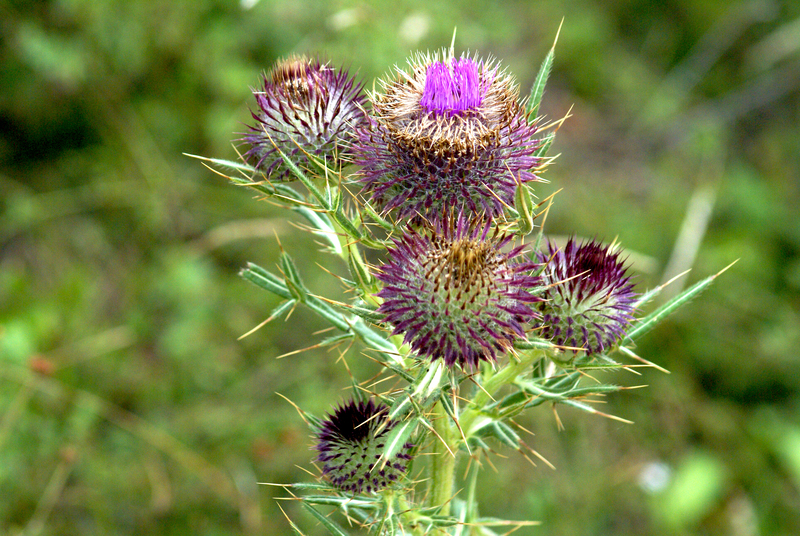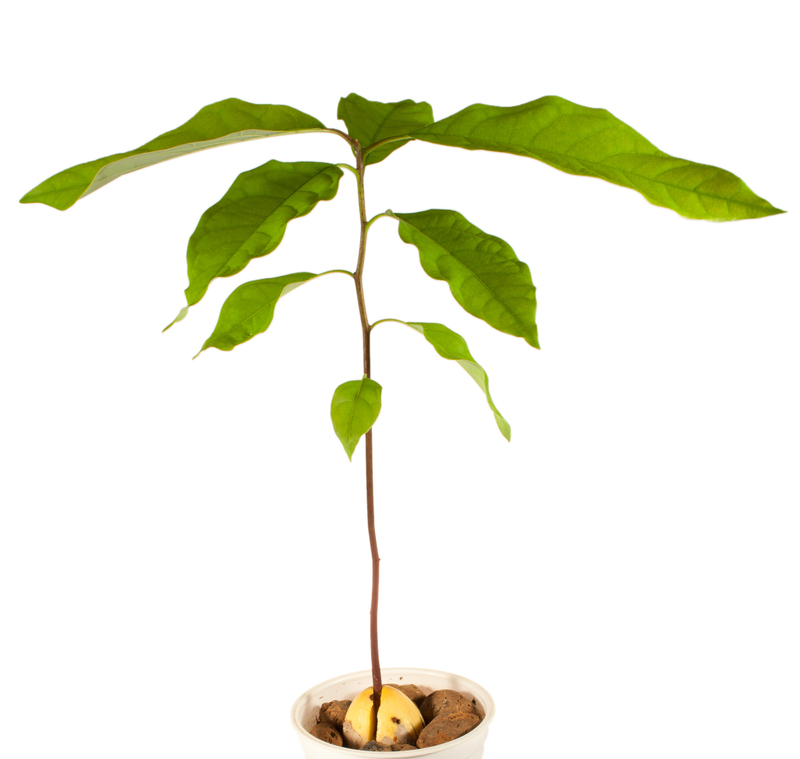From Waste to Wonder: Soil Improvement
Posted on 05/09/2025
From Waste to Wonder: Soil Improvement
In the 21st century, soil improvement has taken on new importance. As populations grow, urbanization spreads, and agriculture intensifies, the quest for healthier soils has become paramount. But what if we could transform waste materials--often cast aside as useless--into a powerful resource for the land? Welcome to the transformative journey from waste to wonder, where innovative techniques and sustainable practices revolutionize how we nurture the earth beneath our feet.

Understanding the Importance of Soil Health
Soil is more than just "dirt." It's a living, breathing ecosystem crucial for food production, water filtration, and carbon cycling. Unfortunately, soil degradation and erosion threaten global food security and environmental stability. Improving soil health is, therefore, a key focus for farmers, gardeners, researchers, and environmentalists worldwide.
Why Is Soil Improvement Necessary?
- Boosts Crop Yields: Healthy soil produces healthy plants, enhancing food security.
- Promotes Biodiversity: Fertile soils support diverse microorganisms and insects vital to the ecosystem.
- Enhances Carbon Sequestration: Improved soil stores more carbon, helping combat climate change.
- Prevents Erosion: Structurally sound soil resists erosion from wind and water.
These reasons underscore the urgency to move beyond harmful practices and embrace solutions that restore our soils. One such solution? Repurposing waste into valuable soil amendments.
From Refuse to Resource: The Power of Organic Waste
Organic waste--such as food scraps, yard clippings, animal manure, and agricultural residues--accounts for a significant proportion of our rubbish. Yet, when handled wisely, these materials become essential tools for soil enrichment.
Composting: Nature's Soil Improver
Composting is the biological breakdown of organic waste into a nutrient-rich material called humus. This natural process not only diverts waste from landfills but also produces a substance that radically improves soil fertility and structure.
- Adds Nutrients: Compost supplies nitrogen, phosphorus, and potassium, enriching poor soils.
- Improves Soil Structure: Humus boosts soil aeration, water retention, and aggregate stability.
- Encourages Microbial Activity: Compost promotes beneficial bacteria, fungi, and earthworms that drive nutrient cycling.
*Tip: To supercharge your soil improvement project, create your own compost pile at home or participate in community composting initiatives.*
Green Manures & Cover Crops: Dynamic Soil Builders
Cover cropping, also known as green manuring, involves growing plant species specifically to be incorporated back into the soil. Legumes like clover and vetch fix atmospheric nitrogen, enriching the earth without chemical fertilizers. Root systems of cover crops break up compacted layers, enhance aeration, and contribute organic matter once tilled in.
- Nitrogen Fixation: Certain plants add natural nitrogen, reducing the need for synthetic fertilizers.
- Soil Protection: Living roots shield soil from intense sun and erosion.
- Weed Suppression: Cover crops outcompete weeds, reducing maintenance needs.
By using crop residues and green manures, farmers and gardeners perform a kind of agricultural alchemy--turning plant waste into wondrous soil nutrients.
Beyond Compost: Innovative Soil Enrichment Techniques
While composting remains the cornerstone of organic soil amendment, there are startlingly creative methods for transforming waste into soil improvement resources. Let's explore some cutting-edge solutions.
Biochar: Turning Waste into Black Gold
Biochar is a form of charcoal produced by pyrolyzing organic waste in the absence of oxygen. This ancient Amazonian technique, revitalized by modern science, creates a carbon-rich amendment that
- Captures and Stores Carbon (slowing climate change),
- Improves Water Retention & Drainage,
- Boosts Beneficial Microbial Activity.
Adding biochar to depleted soils has yielded impressive results, particularly in tropical regions with leached or acidic earth.
Vermicomposting: Earthworms at Work
Harness the power of red wigglers to process food scraps into a high-grade soil conditioner! Vermicomposting utilizes worms to break down organic material into castings--a nutrient-dense, biologically active amendment.
- Concentrated Nutrients: Worm castings provide plant-available minerals and hormones.
- Improved Disease Resistance: Microbes in vermicompost help suppress soil-borne pathogens.
- Odor & Waste Reduction: Vermicomposting is clean, efficient, and adaptable to small spaces.
This method transforms kitchen waste into wonder, apt for both large-scale agriculture and household gardeners.
Utilizing Agricultural and Industrial Waste
Recent advances have spotlighted the use of unconventional waste streams, such as:
- Spent mushroom substrate,
- Sawdust and woodchips,
- Rice hulls,
- Molasses and distillery byproducts, and
- Paper sludge.
When properly treated, these materials can enhance soil organic matter, improve water-holding capacity, and supply slow-release nutrients.
Soil Remediation: Turning Polluted Ground Around
Not all waste is problem-free. Some industrial or urban wastes may contain contaminants. However, certain plants, fungi, and bacteria are capable of phytoremediation--removing or neutralizing toxins and heavy metals in the soil.
- Sunflowers and mustard: Absorb heavy metals.
- Mycoremediation: Uses fungi to break down pollutants.
- Bacteria: Engineered strains process hydrocarbons or pesticides.
With care and innovation, even contaminated sites can be restored from waste to wonder.
Practical Steps for Soil Improvement Using Waste
Integrating waste into sustainable soil health strategies requires planning and diligence. Here's how you can start turning your organic refuse into soil improvement resources:
1. Know Your Waste
- Separate organic from inorganic, toxic, or non-biodegradable waste.
- Avoid meat, dairy, and oily products in compost to deter pests and odors.
2. Choose the Right Process
- Compost for garden and landscape use.
- Vermicompost for high-value crops and small spaces.
- Biochar for challenging soils or carbon sequestration projects.
3. Monitor and Amend
- Test soils periodically for pH, nutrients, and organic matter content.
- Regularly add compost, mulch, or green manure to maintain fertility.
4. Educate and Collaborate
- Join local composting programs or community gardens.
- Encourage neighbors, schools, or businesses to upcycle their organic wastes.
The Global Impact of Waste-Derived Soil Improvement
Scaling up soil enrichment through waste diversion creates a suite of benefits that extend far beyond individual gardens or fields:
- Reduces landfill burden and associated methane emissions.
- Conserves water by improving soil structure and infiltration.
- Decreases reliance on chemical fertilizers, mitigating runoff and pollution.
- Empowers communities to reclaim degraded or abandoned land.
- Builds resilience against climate change and food insecurity.
Countries such as the Netherlands, India, and the United States have adopted large-scale waste composting or recycling initiatives to boost soil fertility, demonstrating a replicable model for others to follow.
Common Questions About Transforming Waste into Soil Treasure
What kinds of waste improve soil?
Most plant-based materials--including leaves, grass clippings, fruit and vegetable scraps, coffee grounds, straw, and woodchips--can be composted or processed into soil amendments. Animal manures (well-aged) and certain agricultural byproducts also offer excellent soil enrichment qualities.
How long does it take to improve soil with waste-based amendments?
Compost can form in 2-6 months, depending on temperature, moisture, and the balance of green (nitrogen) and brown (carbon) materials. Vermicomposting is even faster, producing castings in as little as one month. Biochar acts immediately but integrates best when mixed with compost or soil for several months before planting.
Can soil improved with waste-based amendments support intensive agriculture?
Absolutely. In fact, regular applications of compost, biochar, and green manure can sustainably boost yields, reduce pest pressure, and increase soil carbon--enhancing long-term productivity and resilience.

Conclusion: From Waste to Wonder, the Future of Soil Is in Our Hands
The story of soil improvement from waste is a testament to human creativity and nature's remarkable cycles. By adopting proven organic techniques and pioneering new technologies, communities can convert refuse into rich soil, restore degraded land, and ensure the vitality of future generations.
As you embark on your own journey of turning waste into soil wonder, remember: every banana peel, grass clipping, or coffee ground has the potential to return to the earth, fueling a new cycle of growth and abundance. It's time to change our mindset from disposal to renewal, unlocking the hidden potential in what we once deemed "waste." Your soil--and the planet--will thank you.
Further Reading and Resources
- USDA Soil Health Information: https://www.nrcs.usda.gov/wps/portal/nrcs/main/soils/health/
- Composting at Home Guide: https://www.epa.gov/recycle/composting-home
- Introduction to Biochar: https://www.biochar-international.org/
- Vermicomposting for Beginners: https://web.extension.illinois.edu/worms/
Begin your waste-to-wonder soil improvement adventure today and see the transformation unfold beneath your feet!



